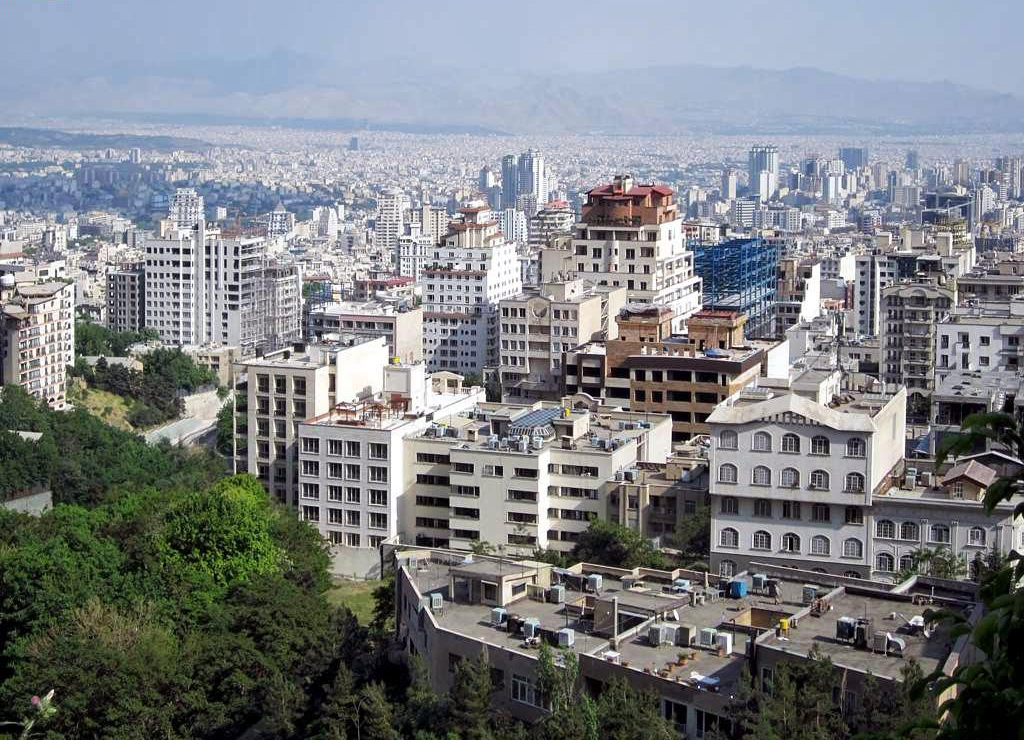Construction on Tehran heights is not a very new phenomenon. In recent years, certain factors such as surge in prices of land in the city have shifted the attention of builders to green spaces, gardens and woodlands. In the meantime, ease of obtaining ‘change of use’ permits from the urban management authority has catalyzed the process of transforming such areas to residential and commercial buildings. This has significantly reduced the contribution of the remaining urban vegetation to local air purification leading to a state of emergency ecologically.
The trees and green spaces, however, are not the only victims as the builders have recently penetrated into the slopes of Alborz mountains as well.
In separate interviews with several urban economists, the Persian Daily Donya-e-Eghtesad has tried to shed more light on the depth and consequences of this phenomenon in Tehran.
‘Construction Cancer’ on Alborz Slopes
“The fact is that urban authorities have restored to selling the city to meet the costs of urban management. Tehran was inflicted with urban selling cancer in the beginning of the 1990s,” Majid Ghamami, ex-manager of Tehran Urban Design project said.
Lack of water resources, traffic congestion, air pollution, empty apartments, garden depreciation, declining investment attractions, aging structure renovation and increasing construction in the northern regions are the resultant problems while the 620-km2 area of the city has limited capacity to respond to the needs of the increasing population, he added.
Tehran county borders the Alborz Mountain range to the east and north, Karaj country to the west and Eslamshahr, Gharchak, Imam Khoemini’s Shrine, Tehran refinery and some other counties to the south. In fact, Tehran boundaries are the same as what was defined 46 years ago in the first Comprehensive Plan of Tehran (enacted 1967) that called for city expansion in the next 25 years (1966-1991) from the then 180-km2 to the existing figure. In the early 90s, a new set of regulations was approved with minor modifications and slight changes in the city boundaries. Since the early 90s, when “selling density” and “agreement” became the main sources of income for the municipality, high-density construction has been encouraged. The new Detailed Plan that was developed five years after the second Comprehensive Plan of Tehran in 2007 did not hesitate to orient the construction map against the interests of the capital. In the absence of government support, the municipality has continued to rely on the income earned from selling density and construction permits in order to meet the costs of urban maintenance and development and that is how the lives of many citizens have been endangered.
But the question is whether the government and urban authorities feel the same danger or not. Undoubtedly, the municipality will never take the initiative to cut this source of income and this is where the government’s intervention becomes necessary and inevitable, Ghamami concluded.
“Regulated” Construction on Heights
Before the enactment of Comprehensive Plan and Detailed Plan of Tehran and in the absence of a unified definition for capital boundaries and permitted construction limits, in some parts, particularly northern heights, buildings beyond the existing limits were constructed. However, upon the approval of the said regulations, the municipality has granted construction permits based on the defined limits.
“Naturally, the advantages of northern parts of Tehran compared to other parts including, but not limited to, nicer weather, makes it a more attractive choice both for people and the builders who eagerly eye higher prices of land in this region.”, Amir Farjami, member of Tehran Landscape Improvement Council said while elaborating on the reasons behind the concentration of construction projects on Tehran heights.
Towers for Gardens
A review of the urban development regulations in the past three decades indicates that the current disastrous situation in Tehran is not a result of lack of regulations but their poor enforcement, according to Mohammad Haghani, chairman of Tehran environment committee.
The 5-year gap between the enactment of Comprehensive Plan of Tehran in 2007 and the Detailed Plan that was supposed to be completed 3 months after is said to be the reason behind the excessive and unregulated construction and population growth that took place in that period. In the meantime, the inconsistencies found in the course of implementation of the Detailed Plan left no options for authorities but to revise it in order to bring it in line with the Comprehensive Plan of Tehran (2007), Haghani added.
In the past 15 years, about 15,000 hectares of vegetation in Tehran has been wiped off and replaced by huge buildings. In addition, recent visits to district 5 in the west heights of Tehran has revealed that one part of Azad University building is located inside the limit set by the Comprehensive Plan while another part falls beyond which is another indication of irregularities in constructions in the past years, Haghani regretted.


